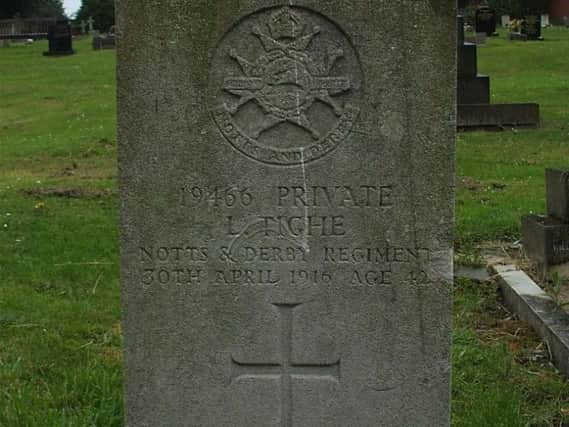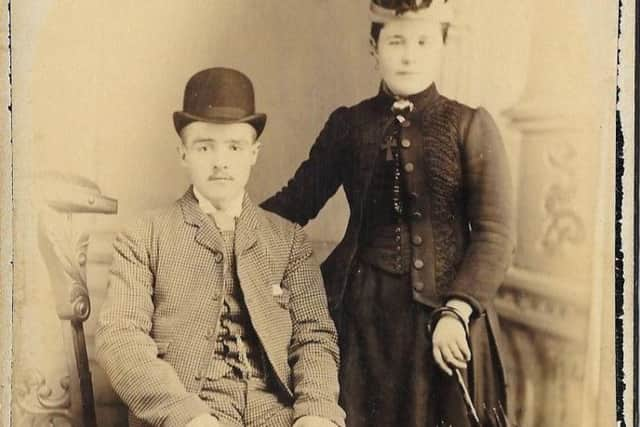Chesterfield tribute to unsung war heroes


As immortalised in the Sebastian Faulks novel Birdsong, thousands of men, mainly miners, were given the dangerous work of tunnelling under the trenches to set explosive charges beneath enemy lines.
The tunnellers played a silent game of cat and mouse with their German counterparts, listening out for the enemy as they attempted to undermine the British lines.


Advertisement
Hide AdAdvertisement
Hide AdEventually, a whole area of the Western Front became a labyrinth of tunnels.
The great grandson of one Chesterfield man who died as a result of his role in the tunnel warfare has been in touch ahead of a special anniversary to try to contact other family members.
Daren Norris writes: “On April 30, members of my family will be travelling from Watford in Hertfordshire to Spital cemetery in Chesterfield to pay respects 100 years to the day since my great grandfather, a forgotten local hero and coal miner Lawrence Tighe, died of his wounds sustained on the Western Front during WW1.
He was one of three sons of Thomas and Ellen Tighe who lived in Shenfield Road, Stonegravels, Chesterfield.


Advertisement
Hide AdAdvertisement
Hide AdHe was with the Sherwood Foresters (Derbyshire & Nottinghamshire) Regiment, like most of the other local lads that had joined up were, and had volunteered to serve his country early in the war, despite being almost 40 years old when it started.
After two years in the trenches, he was digging tunnels and placing explosive magazines under German lines in mid-April 1916 when the tunnel collapsed around him and several others, crushing his legs.
He was eventually rescued and dragged back around two miles through the tunnels to the safety of the Allied lines, and then sent back to England to Spital military hospital in his home town of Chesterfield where he laid in agony for two weeks and eventually died through the blood clots he sustained in the tunnel.
He was able, unlike many others, to die with his wife and children by his side on April 30, 1916 and was buried at the cemetery there.
Advertisement
Hide AdAdvertisement
Hide AdThe brave wartime tunnelling work and extreme engineering efforts under enemy lines by ordinary local Derbyshire miners like Lawrence enabled the German lines to be taken by the Allies and eventually allowed an Allied offensive out of the trenches and ultimately paved the road to the armistice in 1918.
Without these amazing local men where would we be now?
They are all heroes we should never forget, even in this age of digital technology, and when such things seem so distantly in the past and perhaps even irrelevant nowadays.
His younger brother Patrick (also a Chesterfield coal miner serving with the same regiment) was also killed in 1919 in France and is also buried in the same cemetery.
Lawrence’s youngest brother Thomas was killed by coal wagons whilst setting points on the railway line just outside Chesterfield in 1911.
Advertisement
Hide AdAdvertisement
Hide AdSo Thomas and Ellen Tighe had lost all three of their sons by 1919, a dreadful thought for any parent.
On April 30 this year, we will be laying a wreath and saying a few words of remembrance for Lawrence, Patrick and Thomas.”
Daren has written in because he hopes to make contact with local families related to the Tighes.
He is hoping that someone may even have a photograph of Lawrence in uniform that he could get a copy of.
To get in touch with Daren, contact Retro and we’ll link you up.